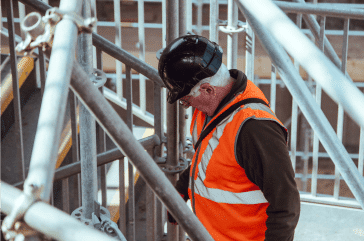Vacant properties face unique risks that occupied homes do not. These risks include vandalism, theft, and property damage, which can quickly lead to significant financial loss. This is where Vacancy Dwelling Insurance comes into play. It’s designed to protect unoccupied homes and buildings for extended periods.
This article will explain Vacant Dwelling Insurance, its essential coverages, common risks associated with vacant properties, and best practices for brokers. This knowledge ensures clients can safely manage their vacant properties without financial strain.
Understanding Vacancy Dwelling Insurance
Vacancy Dwelling Insurance is a special property insurance designed for temporarily unoccupied buildings. It is necessary because standard homeowners or property insurance policies often exclude coverage for vacant properties. Without this specific insurance, property owners could face huge out-of-pocket expenses if something goes wrong while the property is vacant.
Vacant properties are prone to unique risks, so they need special coverage. These risks include vandalism, theft, and damage from extreme weather. Since no one is around to address issues quickly, minor problems can escalate into significant damages. Vacancy Dwelling Insurance helps mitigate these risks by providing coverage tailored to the needs of unoccupied properties.
This insurance is suitable for several scenarios. For example, homes between tenants, properties waiting to be sold, or houses undergoing major renovations can all benefit from this coverage. Brokers should recognize these situations and ensure their clients have the proper insurance to avoid financial setbacks caused by unplanned damage or loss.
Key Coverages in Vacancy Dwelling Insurance Policies
Vacancy Dwelling Insurance policies come with various coverages that address the specific needs of unoccupied properties. Here are some key coverages to consider:
1. Vandalism and Theft: This coverage protects against damage caused by vandals and property theft. Vacant homes are often targets for these crimes, making this coverage essential.
2. Water Damage: Damage from burst pipes or leaks can be extensive. This coverage helps pay for repairs and prevents extensive property loss, which is especially important since vacant properties often have delayed detection of such issues.
3. Fire: Fires in vacant properties can cause severe damage or total loss. This coverage helps cover rebuilding or repairing after a fire incident.
4. Weather Damage: Damage from weather events like heavy snowfall, windstorms, or hail can lead to significant repairs. This coverage ensures that such weather-related damages are insured.
5. Liability: The owner could be held liable if someone gets injured on the vacant property. This coverage helps cover legal costs and medical bills arising from such incidents.
6. Property Maintenance: Some policies include coverage for minor property maintenance issues that could escalate into major problems if left unchecked.
Brokers must understand these key coverages to guide their clients properly. Accurate knowledge of each coverage type helps ensure the client’s vacant property has comprehensive protection, safeguarding their investment against unforeseen circumstances.
Common Risks of Vacant Properties
Vacant properties face several unique risks that occupied properties typically do not. These risks can lead to significant financial losses if not properly managed. Here are some common risks associated with vacant properties that brokers should be aware of:
1. Vandalism and Break-Ins: Unoccupied properties are prime targets for vandals and thieves. These properties attract unwanted attention without regular occupancy, leading to broken windows, graffiti, and stolen fixtures.
2. Weather Damage: Vacant homes are more susceptible to weather damage. Severe weather conditions like heavy rain, snow, or wind can cause leaks, structural damage, or broken windows. Because there’s no one around to address these issues immediately, the damages can worsen over time.
3. Fire Hazards: Even when unoccupied, properties are at risk of fires. Electrical faults, unattended heating systems, and other hazards can cause fires that lead to extensive damage or complete property loss.
4. Water Damage: Burst pipes and leaks can cause significant water damage, especially if they go unnoticed for an extended period. This can lead to mould growth and structural issues, compounding the repair costs.
5. Liability Risks: Injuries on vacant properties can result in liability claims. If someone trespasses and gets hurt, the property owner may be held responsible for medical costs or legal fees.
Brokers must highlight these risks to their clients to emphasize the importance of Vacancy Dwelling Insurance. Proper coverage helps manage these risks, ensuring property owners can protect their investments from unforeseen events.
Best Practices for Brokers to Advise Clients on Vacancy Dwelling Insurance
Advising clients on Vacancy Dwelling Insurance requires knowledge and a proactive approach. Here are some best practices for brokers:
1. Assess the Property: Conduct a thorough assessment of the property to understand its specific risks. This includes evaluating the location, condition, and potential for vandalism or weather damage.
2. Educate Clients: Inform your clients about the unique risks associated with vacant properties and explain why standard insurance policies may not provide adequate coverage for their needs.
3. Customise Coverage: We recommend policies tailored to the vacant property’s needs. These policies cover all potential risks, including vandalism, water damage, liability, and weather-induced damages.
4. Review and Update Regularly: Encourage clients to review their policies regularly and update coverage as needed. Changes in property status, renovations, or other factors can affect insurance needs.
5. Promote Preventive Measures: Advise clients on preventive measures to reduce risks, such as installing security systems, regularly inspecting the property, and maintaining proper heating to avoid frozen pipes.
6. Highlight Policy Exclusions: Ensure clients understand any exclusions in their policies. This transparency helps prevent surprises if they need to file a claim and ensures they know exactly what is covered.
Conclusion
Vacancy Dwelling Insurance is a crucial safety net for property owners with unoccupied buildings. These properties face unique risks, including vandalism, weather damage, water damage, fire hazards, and liability issues. These risks can lead to significant financial losses and property damage without proper insurance.
At Approved Casualty & Surety, we specialize in providing comprehensive commercial insurance in Ontario tailored to the brokers’ needs. Our expertise helps your clients safeguard their vacant properties effectively. Contact us today to learn more about our Vacancy Dwelling Insurance options.
”Disclaimer: The information provided in this article is intended for illustrative purposes only and should not be considered as actual insurance advice. Our articles offer insights and general guidance on various insurance topics however, they do not substitute professional advice tailored to your specific circumstances. For expert, personalized insurance advice and solutions, please contact our licensed insurance brokers.”







